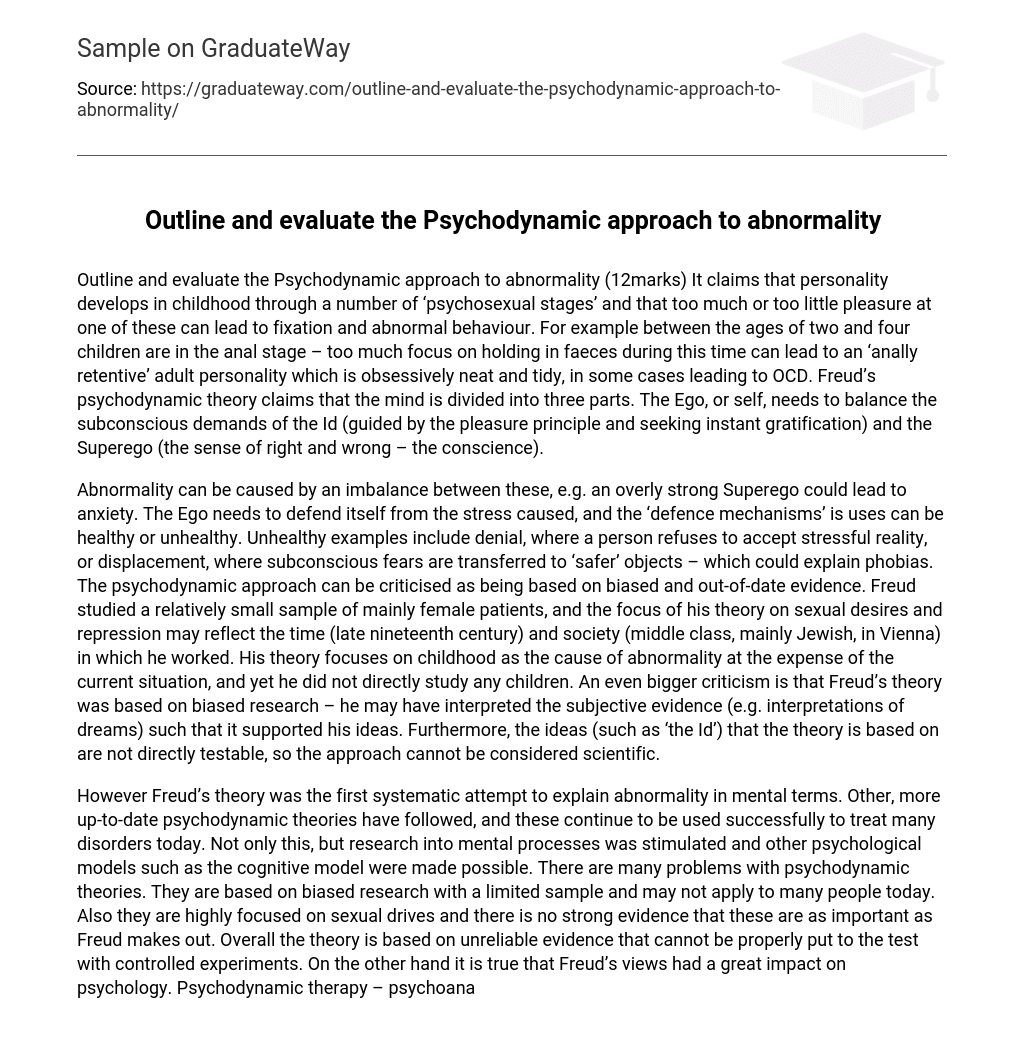Outline and evaluate the Psychodynamic approach to abnormality (12marks) It claims that personality develops in childhood through a number of ‘psychosexual stages’ and that too much or too little pleasure at one of these can lead to fixation and abnormal behaviour. For example between the ages of two and four children are in the anal stage – too much focus on holding in faeces during this time can lead to an ‘anally retentive’ adult personality which is obsessively neat and tidy, in some cases leading to OCD. Freud’s psychodynamic theory claims that the mind is divided into three parts. The Ego, or self, needs to balance the subconscious demands of the Id (guided by the pleasure principle and seeking instant gratification) and the Superego (the sense of right and wrong – the conscience).
Abnormality can be caused by an imbalance between these, e.g. an overly strong Superego could lead to anxiety. The Ego needs to defend itself from the stress caused, and the ‘defence mechanisms’ is uses can be healthy or unhealthy. Unhealthy examples include denial, where a person refuses to accept stressful reality, or displacement, where subconscious fears are transferred to ‘safer’ objects – which could explain phobias. The psychodynamic approach can be criticised as being based on biased and out-of-date evidence. Freud studied a relatively small sample of mainly female patients, and the focus of his theory on sexual desires and repression may reflect the time (late nineteenth century) and society (middle class, mainly Jewish, in Vienna) in which he worked. His theory focuses on childhood as the cause of abnormality at the expense of the current situation, and yet he did not directly study any children. An even bigger criticism is that Freud’s theory was based on biased research – he may have interpreted the subjective evidence (e.g. interpretations of dreams) such that it supported his ideas. Furthermore, the ideas (such as ‘the Id’) that the theory is based on are not directly testable, so the approach cannot be considered scientific.
However Freud’s theory was the first systematic attempt to explain abnormality in mental terms. Other, more up-to-date psychodynamic theories have followed, and these continue to be used successfully to treat many disorders today. Not only this, but research into mental processes was stimulated and other psychological models such as the cognitive model were made possible. There are many problems with psychodynamic theories. They are based on biased research with a limited sample and may not apply to many people today. Also they are highly focused on sexual drives and there is no strong evidence that these are as important as Freud makes out. Overall the theory is based on unreliable evidence that cannot be properly put to the test with controlled experiments. On the other hand it is true that Freud’s views had a great impact on psychology. Psychodynamic therapy – psychoanalysis – is still popular today, particularly in America, and many patients report that it helps them. The model also acted as a starting point for many other theories – before Freud there were only biological explanations and ideas about spirits and witchcraft, so he paved the way for other psychological approaches.





